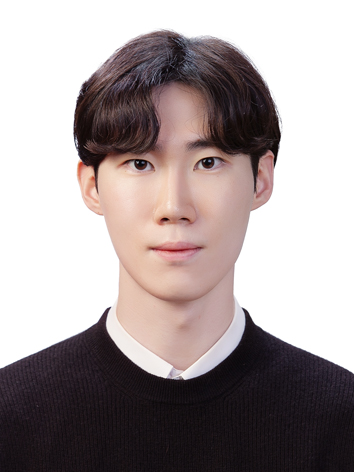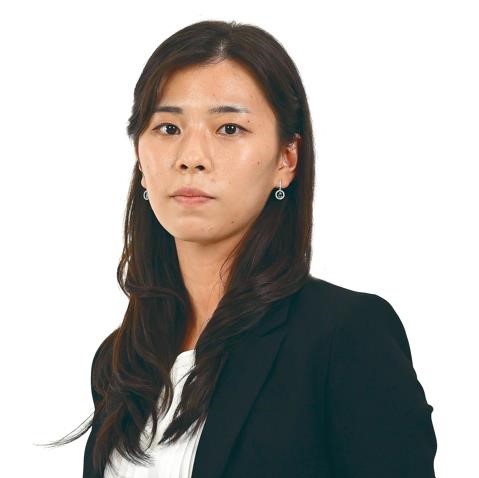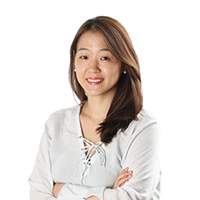Most Popular
Well-curated
-
1
Jazz with a view, fusion burgers and riot of colors at flower fest

-
2
Treats for esports fans, galleries and gingko trees at Samcheong-dong

-
3
Explore history of coffee in Korea, grab a book and savor Disney magic

-
4
Peaceful autumn with dumplings, flower farm, garden festival

-
5
Pokemon, 'Wes Anderson' photos and farm flowers

[Well-curated] Vintage cafe, house of horrors and running as art
By Moon Ki-hoon, Lee Yoon-seo, Park Ga-youngPublished : July 5, 2024 - 09:48

Vintage cafe in timeworn Haebangchon
Perched on the steep slopes of Seoul's Namsan, Haebangchon is a neighborhood where the past seems to exist alongside the present. Narrow uphill roads wind through a cluttered landscape where pedestrians and buses jostle for space, beneath the canopy of tangled power lines and weathered buildings.
Tucked away in maze-like alleyways lies Tajagi, a cafe that embodies the neighborhood’s vintage charm. Its name, meaning "typewriter" in Korean, hints at the cafe’s theme sui generis.
The interior immediately evokes a nostalgic journey through time. Distressed walls frame a handful of wooden tables, some adorned with a vintage typewriter. Movie posters and pop-culture artifacts from a bygone era decorate the walls, while paraphernalia from generations past are scattered throughout, inviting guests to immerse themselves in the past.
Within this distinctly retro vibe, the name of the cafe reveals a clever double meaning. While "tajagi" means "typewriter" in Korean, here it is spelled out using an unconventional set of Hanja characters to indicate "a journal of myself and others" – a fitting moniker for a space steeped in collective memories.
Equally captivating is the panoramic view: Through two large windows, Seoul's skyline rises behind the foreground of laundry-draped balconies and potted plants in walled compounds, offering a scenic juxtaposition of the city’s past and present.

Tajagi's signature drink, the Chocolate Typewriter – a chocolate-infused Viennese coffee (6,500 won), a 1970s and 1980s staple – pairs well with its rich, fluffy banana toast (6,500 won). It's an ideal spot to pause, sip and gaze as the sun sets over the city.
Cafe Tajagi is open Tuesday through Sunday, noon to 10 p.m.

Ito Junji Horror House
As you stroll along the main street of Hongdae, ground zero for Korea's youth culture scene, you'll encounter a large banner hung on a building beckoning passersby to visit Ito Junji Horror House.
Ito Junji Horror House is an immersive exhibition featuring the major works of Junji, one of Japan's most popular horror manga artists.
The centerpiece of this exhibition is an interactive zone resembling a haunted house, where groups of 6 to 10 visitors navigate a dark exhibition space while holding onto a rope, for approximately 15 minutes.
Visitors will be able to see real-life artworks of Junji's famous works such as "Tomie," "The Groaning Drain" and "Long Hair in the Attic." Throughout the space, six actors also portray manga characters to enhance the scare factor.
For visitors who wish to exit midway, early exit buttons are installed throughout the space. Upon pressing a button, a staff member will guide them out of the interactive zone.
Afterwards, visitors can explore manuscripts and original animation artwork by Junji.
There is also a shop and cafe selling merchandise and drinks and dessers inspired by Junji's manga.
The exhibition runs until Sept. 8. Admission is 25,000 won ($18) per adult.



Running as art
The phrase "Fish swim, birds fly, humans run," attributed to legendary Czech runner Emil Zatopek, underscores what he believed to be the natural activities of different species. This quote not only emphasizes the importance of running for humans but also serves as the title of the 10th exhibition at Piknic, an art and cultural complex that hosts various exhibitions and events.
The exhibition is structured around four main themes. The first section explores how human beings have evolved to run while the second part introduces runners who run for different reasons, featuring a diverse range of artworks reinterpreted under the theme of running. There are works by sculptor Lee Hyung-koo, known for his extensive body of work that takes an anatomical approach to the human body, and Berlin-based architectural group Plastique Fantastique, which transforms urban aesthetics with their captivating hypothetical architecture.
In the third and fourth parts, "Rhythm and pace, practice and training" and "Starting Line," an installation artwork by Swiss installation artist Zimou offers the sensation of numerous people running simultaneously with 88 DC motors, cotton balls and a corrugated cardboard box measuring 60 by 60 by 60 centimeters. The sound of small balls hitting the wooden boards in rapid succession is layered to produce a rhythmic, thumping noise reminiscent of a crowded race.
In a video project, contemporary dance group Art Project Bora’s piece set to Steve Reich's composition "Runner," expresses the motions of running and the changes in pace over time.
Another highlight of the exhibition is an interactive installation where visitors can feel their heartbeat while running on a treadmill.
In the annex, known as the runner's lounge, sponsored by Nike, visitors can enjoy conveniences such as storage for running gear and running shoe care services.
Various running-related events will also be held throughout the exhibition period, including a group run program. The program is led by professional running coaches, offering new running courses in Seoul every month.
The exhibition runs until July 28 daily from 10 a.m. to 6 p.m. Ticket prices range from 15,000 won ($11) to 18,000 won.







![[Herald Interview] How Gopizza got big in India](http://res.heraldm.com/phpwas/restmb_idxmake.php?idx=644&simg=/content/image/2024/11/20/20241120050057_0.jpg&u=20241120164556)

![[KH Explains] Dissecting Hyundai Motor's lobbying in US](http://res.heraldm.com/phpwas/restmb_idxmake.php?idx=644&simg=/content/image/2024/11/20/20241120050034_0.jpg&u=)

![[Kim Seong-kon] Farewell to the vanishing John Wayne era](http://res.heraldm.com/phpwas/restmb_idxmake.php?idx=644&simg=/content/image/2024/11/19/20241119050096_0.jpg&u=)















![[Today’s K-pop] Blackpink’s Jennie, Lisa invited to Coachella as solo acts](http://res.heraldm.com/phpwas/restmb_idxmake.php?idx=642&simg=/content/image/2024/11/21/20241121050099_0.jpg&u=20241121172748)